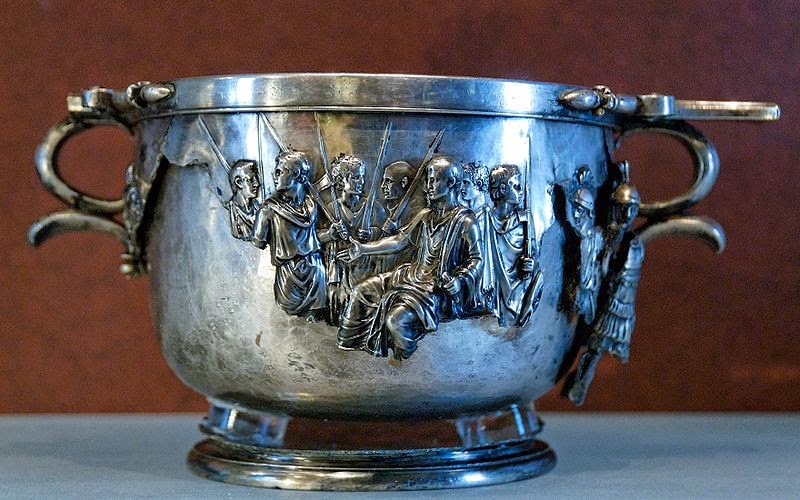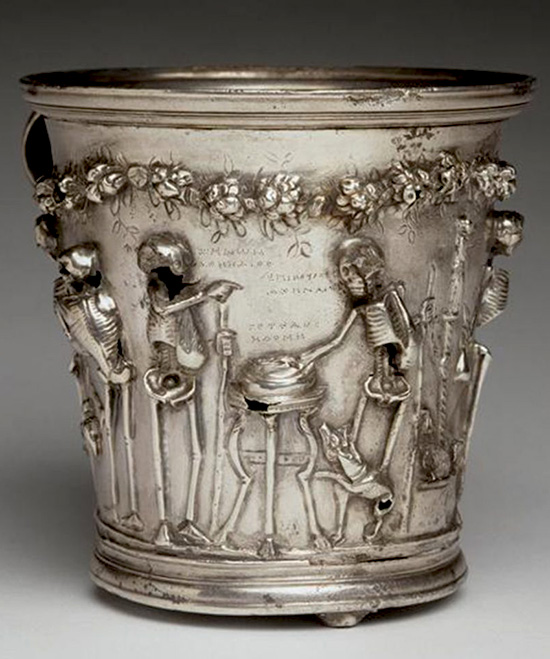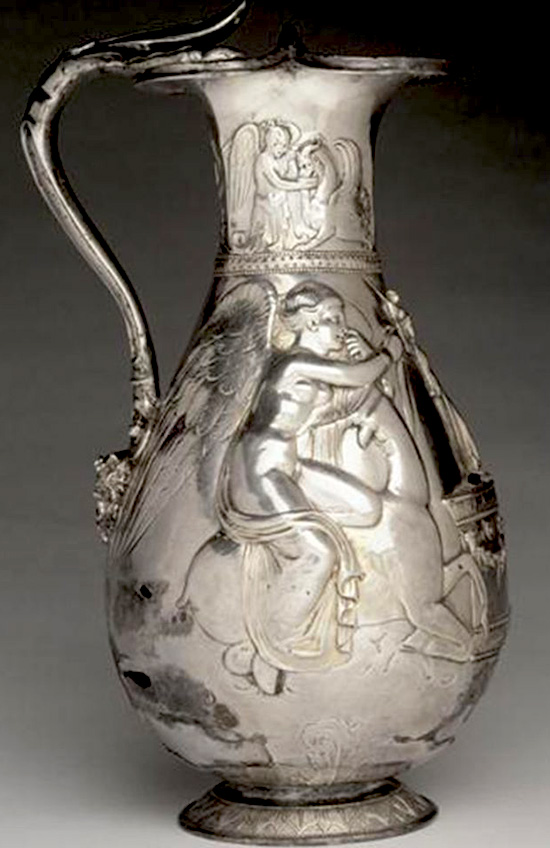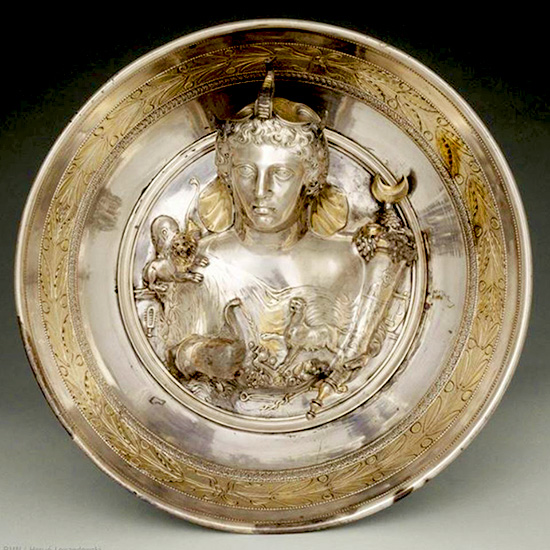Preface 2023
Preface – magazine 2023 A contemporary magazine feeds upon dynamism and vigour. It instantly perceives the inputs deriving from the readers and evolves, offering its best at...
Preface – magazine 2023 A contemporary magazine feeds upon dynamism and vigour. It instantly perceives the inputs deriving from the readers and evolves, offering its best at...
In Paris, in some cases of the Louvre Museum, we can admire an extraordinary treasure, a rich and refined table service made up of 109 pieces in worked and embossed silver, an...
In the “Regimen Sanitatis” of the Codex Atlanticus (F 213v), Leonardo da Vinci registers the hygienic precepts and advice for healthy living, followed by the rules of...
The twentieth-century wars witnessed a series of crucial revolutions in the field of food organization, both military and civil, which, at the same time, much involved the...
Discovering the educational and training activities of the Edmund Mach Foundation in San Michele all’Adige (TN) Excellence in the agricultural, food and environmental sectors. The...
Florence University of Arts – The American University of Florence FUA – AUF Architect, writer, entrepreneur and the art of cooking Florence – Walking in Via...
Every morning, on time, a few moments before dawn, which, in that region, smelled of thousands of woods, Sumio, who everyone in the village knew as “the Japanese”,...
In recent months, South Korea has risen against Beijing’s want to associate the pao cai speciality with its most representative and identifying gastronomic recipe based on...
The plague described by Manzoni arrived in Milan in the autumn of 1629, spreading gradually in 1630. In May of the same year, everything fell apart, so much so that people...
An interview with Alberto Tintori of OSCAR TINTORI VIVAI By Fiamma Domestici I have always nourished an unconditional passion for the noble citrus fruits of the Tuscan tradition,...
The Westernization of Japan: the Meiji Renewal With the expression Meiji Renewal (明治 維新), we indicate the radical change in the political, economic and social structure of Japan,...
In Paris, in some cases of the Louvre Museum, we can admire an extraordinary treasure, a rich and refined table service made up of 109 pieces in worked and embossed silver, an excellent goldsmith creation from the Roman imperial period. Most of the findings date back to the first century AD. It is the Boscoreale Treasure. Boscoreale (in the province of Naples) was, at the time, a wealthy agricultural suburb of Pompeii, with very fertile land, located as it is on the slopes of the Vesuvius, and buried by the eruption of the volcano in 79 AD. There were picturesque villas and fertile cultivated land, orchards and vineyards.

Baron Edmond James de Rothschild donated part of this fortune to the Parisian museum; other collectors, who had also bought it on the antique market, donated another part. The story of the discovery, however, is very dark and intricate. In 1895, the landowners in the Pisanella neighbourhood, in the countryside of Boscoreale, carried out archaeological research in the land, bringing to light the rooms of an ancient Roman villa. They found remains of a container in the ancient Torcularium, the room where the basket press for the grapes was. It bore an impressive table service, some gold jewels of exceptional value (necklaces, earrings, bracelets, etc.), three silver mirrors and an extraordinary number of gold coins, more than one thousand, mostly Nero’s auras. It is, as experts argue, the richest classic discovery ever unearthed. The site also contained the skeletons of two men and one of a woman who wore precious gold and topaz earrings.

Archaeologists believe that the latter was the owner of the villa, who was presumably trying to hide, helped by her servants, these possessions at the beginning of the eruption of the Vesuvius, which eventually killed them, and ultimately burying everything. One of the landowners, Vincenzo De Prisco, and a worker, Giuseppe Finelli, made the discovery. Other diggers had left earlier because it was Easter day. At night, therefore, the two hid the treasure and stole it, despite the laws of the recent Kingdom of Italy, which forbade it. It was the 13th of April. With the help of a Neapolitan antiquarian, Cesare Canessa, they sold the valuables secretively and sent them to France. With the proceeds of the sale, the Canessa brothers opened auction houses in Paris and New York.
The Roman villa had belonged to a wealthy Pompeian banker, Lucio Cecilio Giocondo, who also owned a sumptuous residence in the city (in the Regio V). Here, among other items and in addition to his bronze bust, they discovered his archive consisting of 154 waxed tablets on which are recorded the sums paid to customers for the sale of goods, slaves, the sums of the collected rents, the modest percentage he kept for himself. The banker probably died in October, during the eruption. The writer Pliny the Younger left a dramatic description of the event in a letter to Tacitus (Ep. VI, 26.20), and dates the eruption on 24 August. However, a mural inscription in charcoal, recently uncovered in Pompeii, marks the disaster on 24 October, 79 (See M. OSANNA, Pompei. Il tempo ritrovato, Milan 2019, p. 14.). The female remains, lying in the torcularium of the villa, perhaps belonged to the owner’s daughter, reasonably named Maxima, as we can see from the engravings laid on nearly forty silver objects. Since this is a female cognomen (family name), the woman’s full name may have been Caecilia Maxima. Alternatively, since we do not have the gentilicius (the ancestry name) of the woman, we can find ourselves in front of Giocondo’s wife. She would then have brought a different nomen, that of her ancestry of origin. In such a case, a section of this tableware would have been part of her wedding dowry.

The table service was of many pieces used for preparing, mixing and pouring wine. In fact, in ancient times, people used to add honey or spices, herbal extracts, fragrant woods, vegetable essences, myrrh, perfumes, absinthe, rose extracts to the wine. Consequently, they had to filter it before pouring it. There are, in fact, scoops, spoons, sieves, jugs, oinochoai (wine vases), skyphoi and trays to bring food to the table; plates, sauceboats and saltcellars. Moreover, some splendid and refined cups, usually paired, decorated with animal or vegetable motifs, with mythological themes, or with images honouring the imperial family, such as the cups of Augustus and Tiberius. We should not forget the exceptional “cup decorated with skeletons”, dated to the Hellenistic Age, which depicts the skeletons of famous Greeks, such as Sophocles and Moschus, Epicurus and Zeno. They recite the following verses: “Life is a theatre”, “Enjoy it while you are alive “,” Pleasure is the supreme good “(an original comic strip, ahead of its time). There are also two cups, at the centre of which two medallions are applied, adorned with full-rounded busts of a man and a woman, perhaps the ancient owners of the set, whose names, sadly, we do not know. Still, since the tiny male portrait shows a remarkable resemblance to the bust of Cecilio Giocondo found in Pompeii, I would postulate that he is the elderly portrayed on the cup. However, the partially gilded silver cup (diam. 23 cm) deserves special attention. On the bottom, there is a medallion decorated with a bust in noteworthy relief. The young woman portrayed wears a chiton and an elephant headdress. On her arm, she holds a cornucopia from which bunches of grapes and a crescent come out. Archaeologists have interpreted the figure, based on the images surrounding it, as a representation of Africa, or, more recently, of Cleopatra Selene, the daughter of Antony and Cleopatra, raised in Rome by the Augustus family and then married to the king of Mauritania. Hence this cup would celebrate that wedding. In my opinion, the young woman and the symbols surrounding her [the cornucopia, the crescent, the snake, the lion, the panther, the elephant, the sistrum, the falcon (Horus?)] suggest that it is the goddess Isis, usually associated with such figures. In Pompeii, people hugely worshipped the Egyptian goddess from the second century BC, and there was a famous temple dedicated to her, the Iseum, which the eruption of 79 destroyed, too. As a result, it is not out of place to find an image of Isis among the precious bowls inside the Pompeian treasure of Cecilio and Maxima.

In rich Roman houses, frescoes, mosaics, statues, Corinthian bronzes, Greek vases, bowls, silver pottery were status symbols. Cicero in the Paradoxa Stoicorum states that when they did not use silverware, they still arranged it on the tables so that its owners could show it to guests as a testimony of good taste and as a display of wealth.
Returning at this point to the discourse on the illegal sale of the finds, the news, as we can imagine, spread in Italy and aroused a wave of outrage even at the political level. Giovanni Bovio, then deputy of the Kingdom, questioned the Parliament of such a crime that had damaged the national historical-archaeological heritage. The Minister of Education, Guido Baccelli, a doctor and a humanist, passionate about classical antiquities and the archaeological excavations of Pompeii, also took part in the debate. They carried out a police inquiry and a parliamentary inquiry into the clandestine export of the finds. Vincenzo De Prisco was under investigation but was acquitted. He made amends by merely giving up the few pieces of the valuables still in his possession. A very cheap mending for the loss caused to the national artistic heritage!
In 1900, Benedetto Croce also intervened in the scandal of the furtive deal. In the press, he accused the Director of the National Museum of Naples of the condescension shown in selling the treasure and frescoes from the villa of P. Fannius Synistor in Boscoreale. (See A new scandal at the Museum National of Naples, “Napoli Nobilissima” IX, pp. 154 ff.). Meanwhile, De Prisco had also traded many of the Synistor frescoes he excavated between 1899 and 1900 (see infra). The controversy, increasingly heated, prompted the resignation of the Director of the Museum. In conclusion, we should mention Salvatore Di Giacomo. He was a poet, playwright and writer but also a brilliant journalist. He collaborated with many newspapers and magazines and was known for his extensive attacks in the press. From 1895, he wrote several articles to inform readers about the extraordinary discoveries inside the villa of Cecilio Giocondo and the ones, in the Grotta district, in the splendidly frescoed Publius Fannius Synistor villa. Many of those frescoes, detached, framed and later sold also by De Prisco and Canessa, are now exposed in foreign museums: at the Metropolitan Museum of New York, the Louvre, the Musée de Picardie in Amiens, and the Musée Royal de Mariemont in Belgium. Despite the scandals and thanks to the enormous amount of money earned from the sale, Vincenzo De Prisco self-financed the electoral campaign of 1897. They elected him to the Parliament of the Kingdom for two terms (1897-1904). There is a vast bibliography on the vicissitudes concerning the Boscoreale Treasure. For the sake of brevity, we limit ourselves to mentioning the work by Carlo Avvisati (Il tesoro di Boscoreale e lo scandalo della vendita all’estero – The Boscoreale Treasure and the scandal of its selling abroad, 2016). With great regret, we are aware that, for more than a century, the marvellous Boscoreale Treasure has been in the Louvre and that Italians who love antiques must go to Paris to admire it. Nevertheless, our outrage and resentment mount even more at the thought that many of our archaeological findings (and not only) sold on the black market by grave robbers and unscrupulous merchants. These discoveries, which enrich private collections, are taken away from the public eye forever.
Our hearts weep in front of the suspicion that, if what the press and TV widely reported is authentic, a third statue, found together with the Riace Bronzes, is located overseas. Perhaps in the basement of a museum or hidden in the secret vault of some collector. No one has ever seen it, but a witness certainly noticed the stealing from the Calabrian beach of a shield, a broken spear and maybe a helmet in August 1972. We can only imagine the beauty of that round, or perhaps hollow, hoplite shield. Who knows which decoration the sculptor Pythagoras from Reggio would have placed at the centre of the oplon? The Athenian owl or the Theban sphinx? Or was the shield smooth? Perhaps the cast in bronze subjects could have helped us identify the warriors and the poleis to which they were associated. These wonders of Greek art of the fifth century were found in the Ionian Sea, hidden and eventually smuggled out of Italy.
“The rest is silence”.
ANNA CAFISSI